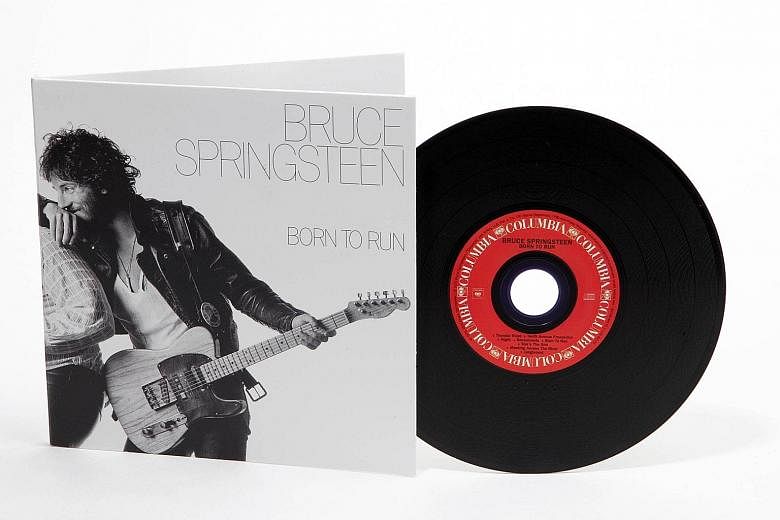NEW YORK • John Berg, a Grammy- winning art director for Columbia Records who was midwife to some of the most emblematic album covers of the late 20th century - featuring images of Bob Dylan's backlit corona of hair, the Chicago logo embossed in chocolate and singer Bruce Springsteen sharing a private joke with saxophonist Clarence Clemons - died on Sunday in Southampton, New York. He was 83. The cause was pneumonia, his wife, Ms Durell Godfrey, said.
Berg, who had never worked on a record album when he joined Columbia in 1961, was responsible in his quarter-century there for more than 5,000 of them, by musicians as diverse as Blood, Sweat & Tears; the Byrds; Lead Belly; Thelonious Monk; Simon and Garfunkel; Bessie Smith; Barbra Streisand; and George Szell.
He commissioned covers from some of the foremost artists of the period, including designer Milton Glaser; illustrators Paul Davis, and Edward Sorel; and photographers Richard Avedon, Jerry Schatzberg and W. Eugene Smith.
Hallmarks of his work included stylistic ecumenicalism, cheeky wit, innovative typography and the frequent use of gatefold covers, in which the album opened like a book and yielded twice as big a canvas for artwork.
One of the best-known covers produced under his direction was Bob Dylan's Greatest Hits (1967), which features the backlit photograph, by Rowland Scherman, of Dylan in performance. In what was often described as the first marketing effort of its kind, the album was packaged with an accompanying poster, commissioned by Berg and memorably executed by Glaser, that depicted Dylan in profile, his hair a mass of brightly coloured psychedelic whorls. The design of the album won Berg one of his four Grammy Awards.
He employed unorthodox packaging for another Dylan album, the two-LP Blonde On Blonde (1966). Its cover, featuring an immense photo of Dylan's face by Schatzberg and no type, opened vertically to reveal a nearly full-length portrait. "The record would fall out on the floor when you opened it up," Berg told The East Hampton Star in 2012. "That was a big selling point. Everybody wanted one because he'd never seen that before."
John Hendrickson Berg was born in Brooklyn on Jan 12, 1932, and reared there in Flatbush. After graduating from Erasmus Hall High School, where he was a cartoonist for the student newspaper, he earned an undergraduate degree from Cooper Union in Manhattan.
He worked for advertising agencies, including Doyle Dane Bernbach, and for magazines, including Esquire, before joining Columbia as an art director. He was later named creative director and retired in 1985 as a vice-president.
At Columbia, his job drew not only on his flair for packaging, but also on his esteemed eye for selection. Assigned to create a cover for Born To Run, he found himself contemplating with distaste the posed image that Springsteen had chosen.
Berg recalled in an interview: "Bruce showed me the picture he wanted, which I always describe as 'John Updike'. He looked like an author, one of those back-cover-of- his-book pictures. I asked him to leave the stuff with me and I would go through the contacts."
Sifting through the images, by Eric Meola, he came upon one of Springsteen in a moment of candid intimacy, his face dissolving in mirth as he leaned on Clemons' shoulder. With that image, the album's cover became one of the most totemic of all time.
Berg's calling often entailed the discreet art of diplomacy. For The Barbra Streisand Album (1963), he had to persuade Streisand to approve a photo of her face in shadow. He prevailed and won a Grammy.
It equally entailed knowing when to use little or no photography at all - something he did in a series of albums by Chicago. Their design centered on the group's cursive logo, which appeared carved in wood, worked in leather, hidden in the loops of a fingerprint, printed on a sepia-toned map and, in Chicago X (1976), a Grammy-winning effort for Berg, moulded in chocolate.
NEW YORK TIMES

